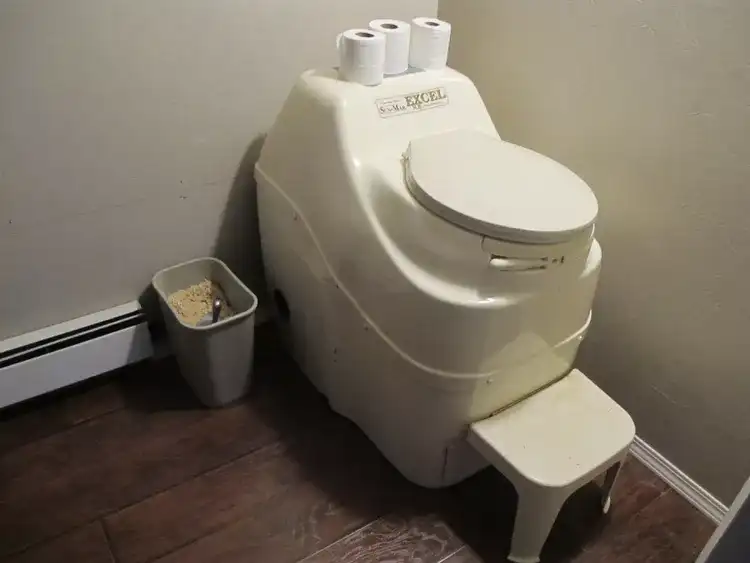In an era where sustainable living is gaining traction, composting toilets offer a practical and eco-friendly alternative to traditional plumbing. These systems break down human waste through aerobic decomposition a process that transforms it into compost without using water. Ideal for off-grid living, mobile homes, and eco-conscious households, composting toilets help reduce water consumption and sewage infrastructure dependency.
What Is a Composting Toilet?
A composting toilet is a waterless system that uses natural processes — including microbial activity and carbon materials to convert human waste into a dry, humus-like substance. The result is an odorless, pathogen-free product that can, in some cases, be used as fertilizer, depending on local regulations.
Types of Composting Toilets
- Slow (passive) systems: Often found in remote areas or cabins. These operate without power or fans and rely on time to decompose waste.
- Active systems: More advanced and efficient, these typically include fans and sometimes heaters to accelerate composting. They are better suited for high-traffic use or permanent installations.
How Composting Toilets Function
The operation of composting toilets is simple but effective. After each use, a carbon-rich material like sawdust or coconut coir is added. This not only absorbs moisture but also provides the proper balance of carbon to nitrogen for decomposition.
The Role of Microorganisms
Microbes such as bacteria and fungi are central to the composting process. In slow systems, decomposition occurs naturally over time. Active systems maintain optimal conditions like temperature and airflow to support microbial breakdown more efficiently.
Moisture and Temperature Balance
To ensure composting works correctly, these factors must be managed:
- Moisture: Too much liquid can lead to foul smells and slow decomposition. Urine-diverting models help control this.
- Temperature: Mesophilic organisms thrive between 68°F and 113°F. Active systems may include heaters to maintain this range, especially in colder climates.
Composting Toilet Maintenance
While these systems are not “flush and forget,” their upkeep is straightforward with routine attention.
Regular Tasks Include:
- Emptying compost: The frequency depends on user volume and system size. Seasonal cabins might require emptying just once a year.
- Urine management: In separating models, urine containers need more frequent emptying and cleaning.
- System checks: Fans or heaters, if installed, should be inspected and cleaned periodically.
It’s important to note that properly maintained systems are not prone to odor or insect problems. A well-aerated, carbon-rich environment prevents both.

Comparing Slow vs. Active Systems
Slow Systems
- Low maintenance and simple to build (often DIY-friendly)
- Best for seasonal or low-use settings
- Decomposition takes months or longer
Active Systems
- Faster composting thanks to heat and ventilation
- More suitable for full-time use
- Requires electricity or solar power in some cases
Choosing the Right System
Your choice will depend on several factors:
- Usage: How many people will use the toilet and how often?
- Location: Will it be indoors or outdoors? Is power available?
- Design preferences: Do you prefer a sleek, contained unit or a minimalistic off-grid solution?
For RV owners or off-grid adventurers, compact models like the Kildwick (fanless and power-free) are ideal. Larger homes may benefit from an active system with automatic features that feel more like a conventional toilet.
Environmental Benefits
One of the strongest arguments in favor of composting toilets is their water conservation potential. Traditional flush toilets account for up to 30% of household water use, making them a significant drain on water resources especially in drought-prone regions.
- No water waste
- No need for sewage infrastructure
- Reduces pollution from septic or city wastewater systems
- Produces compost that, if allowed, can enrich soil naturally
Frequently Asked Questions
Do composting toilets smell?
When used properly, no they typically smell less than regular bathrooms. Separating urine and using carbon materials eliminates most odor, and fans help ventilate.
Do you have to empty them often?
It depends on usage and the system size. Seasonal cabins may only need annual maintenance, while full-time use in small units may require more frequent emptying.
Can insects get in?
Insect infestations are rare if the composting system is well balanced and functioning correctly. The presence of bugs usually signals too much moisture or improper ventilation.
Where does the waste go?
It remains in the toilet system, gradually breaking down into compost. In some cases, it is stored for months and then removed for disposal or use as fertilizer if allowed by local laws.
Composting toilets represent a meaningful shift toward sustainable living. While they do require some maintenance and adjustment, their benefits from conserving water to producing usable compost make them a compelling choice for those looking to reduce their environmental impact. Whether you’re going off-grid, building a tiny home, or simply exploring greener alternatives, there’s likely a composting toilet system that fits your lifestyle.





